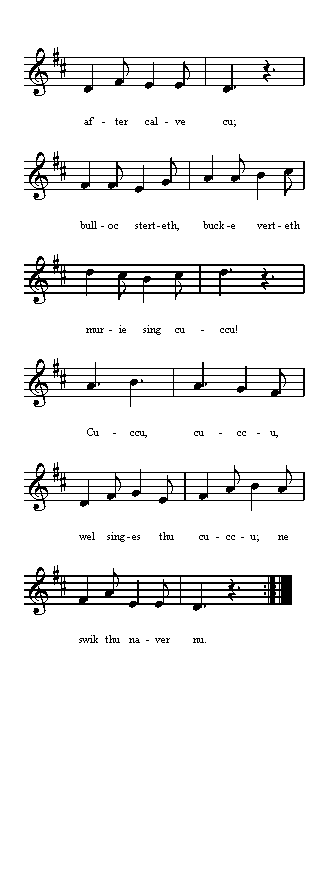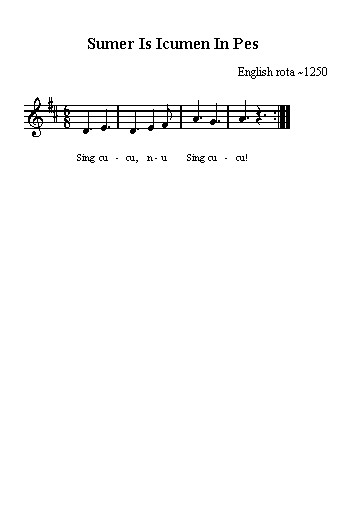
Sumer Is Icumen In
English rota ~ 1250
Sumer is icumen in,
Lhude sing, cuccu!
Groweth sed and bloweth med
And springth the wude nu.
Sing, cuccu!
Awe bleteth after lomb,
Lhouth after calve cu
Bulloc sterteth, bucke ferteth.
Murie sing, cuccu!
Cuccu, cuccu,
Wel singes thu, cuccu.
Ne swik thu naver nu!
Sing cuccu nu, sing cuccu!
Sing cuccu nu, sing cuccu!
Modern translation:
Spring has come in
Loudly sing, cuckoo!
Grows the seed and blooms the meadow
And the woods springs now
Sing, cuckoo!
The ewe bleats after the lamb
The calf lows after the cow
The bull leaps, the buck leaps, twisting. (alt: Bullock starteth, buck farteth,)
Merrily sing, cuckoo!
Cuckoo, cuckoo,
Well sing you, cuckoo.
Nor cease you ever now!
Sing cuckoo now, sing cuckoo!
Sing cuckoo now, sing cuckoo!
Notes by Mistress Fabienne l'Accusee:
This is one of the most celebrated pieces in English music history. It is from a
manuscript in Reading, ~ 1250. The form is called a rota, better known to
us in modern day as a round or canon. It is one of the early examples of this
form, and is considered very progressive for its time compared to the canons
from France and Italy. The modern sound of a major tonality and the broad use of
3rds and 6ths, uncommon elsewhere at the time, hearlded the end of the Ars
Antiqua (old art) and helped usher in the Ars Nova (new art) in
England
Breath marks have been added at good
locations to star the piece again for the round. There is also a pes (no, not
pez!) which is the foot, or the ground of this piece that is sung over and over
under the round happening above:
Pes
Sing cuccu nu, sing cuccu!


